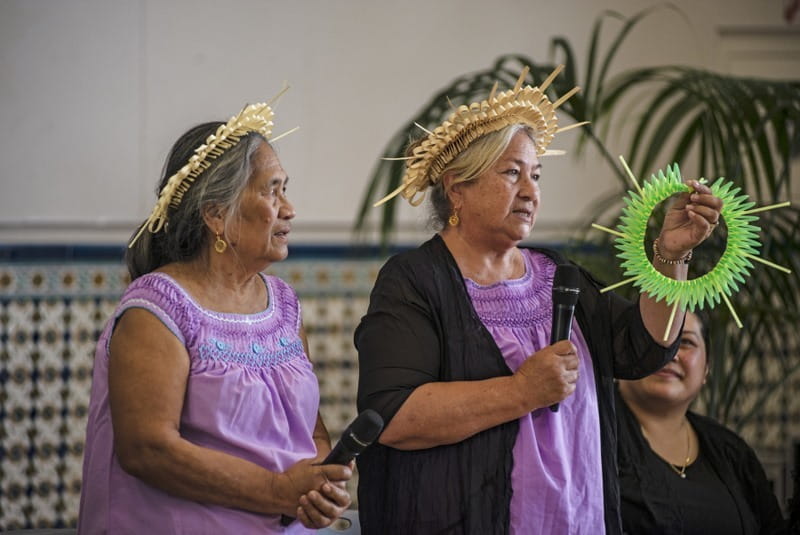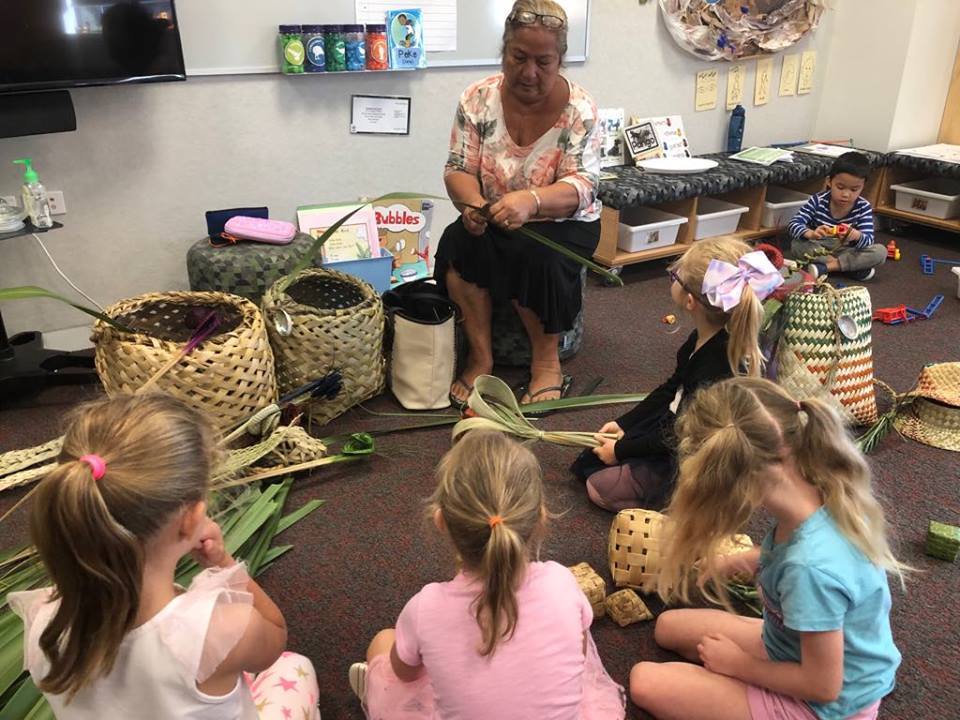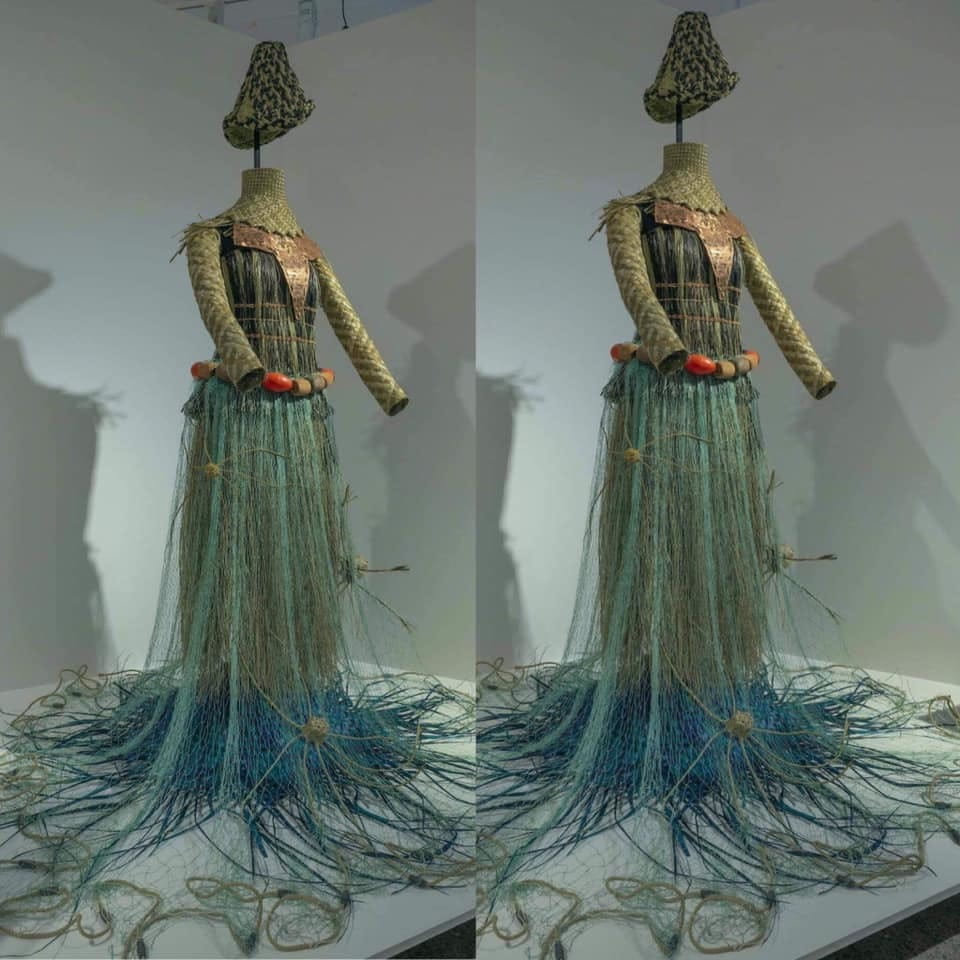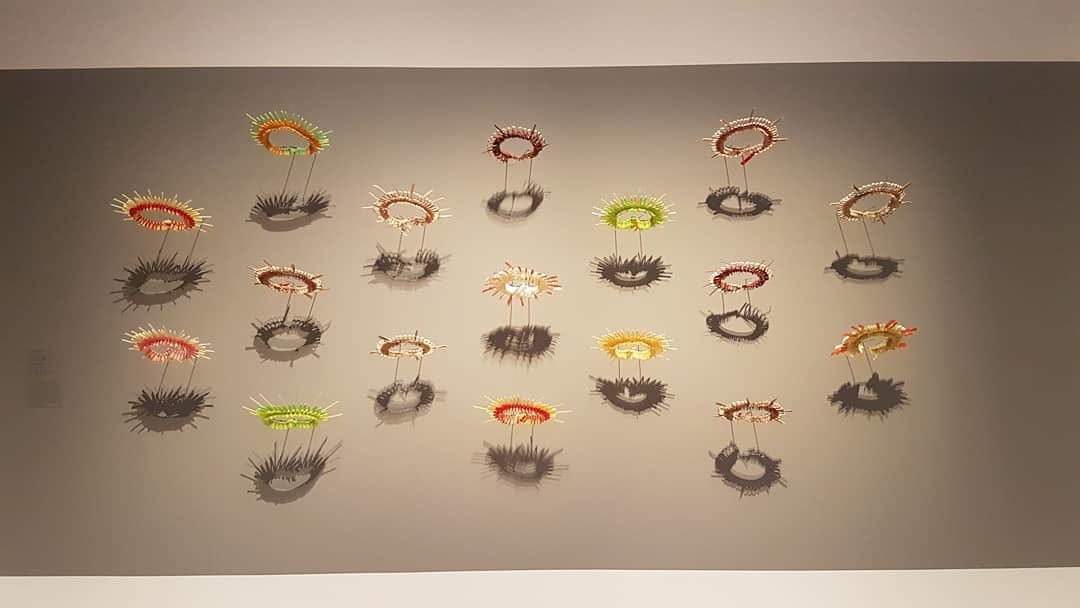11 Jul 2021

Kiribati master weaver Louisa Humphry is passionate about the restoration of heritage art forms. Together with Kaetaeta Watson, theyve led the revival of traditional Kiribati arts in New Zealand.
In 2019, the pair won the Pacific Heritage category of the Creative New Zealand Arts Pasifika Awards. Louisa spoke with us to share her thoughts on weaving and Wikin te Taetae ni Kiribati – Kiribati Language Week.
Where did your journey with weaving begin?
Our journey into the art of weaving started way back when we were in Kiribati where we would watch the preparation of material for weaving from our pandanus leaves and coconut leaves and other materials that are used to make utensils and mats and strings etc to be able to make useful daily living and useful things.
As young people we would start with fun things such as different shapes we call te ano, these are used for some of the games such as te oreano which is a form of baseball. We also make birds, headbands and simple fun things to start us on our journey to being interested in the art of weaving.
This also led us to making dance costumes, bwaai ni maie, which is a skill in itself with the making of grass skirts, coconut leaves harvested, boiled and dyed black traditionally in a kind of smoking process called te kabweari. We then have decoration on the black skirt, shell beld, te tumara, and te katau made of discs of coconut shell strung on te kora, coconut sinet.
Then there are all the body adornments such as te ramwane, the straps across your body, te tiri ni mao, the neck adornment, te karuru, arm banks. We then go to the head adornments for dancing, te tai, a woven crown, te itera, garland of fresh flowers. All the above are so intricate and beautiful that it captivates our interest in so many ways.

Of course I got married and came to settle in Aotearoa and all this interest was put aside for a while so I could concentrate on raising a family and getting to know our new life in our new land! My family, husband Jack, four children, Debbi, Sandra, Erena and David have been an inspiration for me to pass on my culture and heritage and rich Kiribati history. They have given us 12 grandchildren and 1 great-grandchild that have spurred me to carry on with passing on more stories and culture to enrich who they are!
Does language have a role in the cultural element of your work?
Language certainly played a huge part in all activities that involve our heritage art. We then started to continue with our interest in our heritage art because we realise that being in a new land we need to learn to utilise materials that are available here in Aotearoa. Our next step was to liase with Tangata Whenua and learn about harakeke. We then used this knowledge to carry on with keeping up with our traditional heritage skills. We have run several workshops that Kiribati language is certainly a huge part of. Our young people have participated and learnt not only the skills in doing our traditional art but names of different items and where and how they are used as our ancestors would have named them and explained the meaning of the activities involved. The growing Kiribati population in Aotearoa need to stand tall and be proud of their culture and heritage. Knowing who you are, your roots, your language and culture will make you appreciate the richness of other cultures around you.

What is your favourite Kiribati phrase or proverb?
My favourite Kiribati phrase - Tai karaba te rabakau which means, don't hide your knowledge. Sometimes we hear of knowledge that is only passed on to families or is kept in the family, I do appreciate that this is part of our culture and has it's place but I see it differently sometimes and when we are scattered around the world and need to share our talents and knowledge that will keep our culture alive and become part of who we are in our new lives in whatever country we adopt. It goes hand-in-hand with our language - our identity as Kiribati people.
Congratulations on being recognised in the Queens birthday honours list. How was it?
The recognition in the Queen's honours was so unexpected. I am proud to know that the work I have done and continue to do is appreciated but when you do things in life, you do it for the love of your people and culture and never expect any sort of reward!
What projects are you working on?
Kaetaeta and I have just finished handing over 'Otintaai', a work we based on a Kiribati Woman Warrior facing hard times of climate change, overfishing of our waters, plastic rubbish in our ocean. Otintaai means ‘rising sun’ and even though the work is facing hard times we want to let everyone know that we wake up every morning and see the sunrise which gives us hope and inspires us to look after our earth.

We will carry on working with our communities and our upcoming workshop will be with the Wellington Womens group.
We would like to acknowledge the help we have received from Lagi Maama Academy and Consultancy. They do a wonderful job to make sure Pacific artists are heard and appreciated for much more of the work they do.
How will you be celebrating Kiribati language week?
This year I plan to join with the Kiribati National Council activity celebrating Kiribati Language Week as well as celebrating our Independence Anniversary. I will also join with the Waikato University Kiribati Students who are celebrating this week, one week ahead so they can join with the National celebration next week. We also have a group called 'Ueen Kiribati' who will meet later in the year to carry on with Kiribati language and cultural activities in Papamoa.

For more information on activities or resources on Kiribati Language Week, check out the Ministry of Pacific Peoples website



